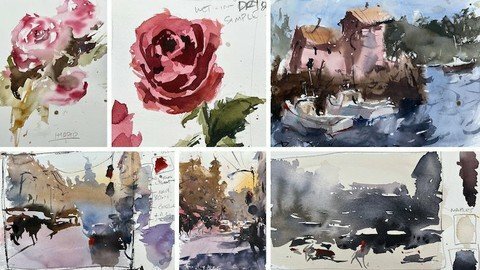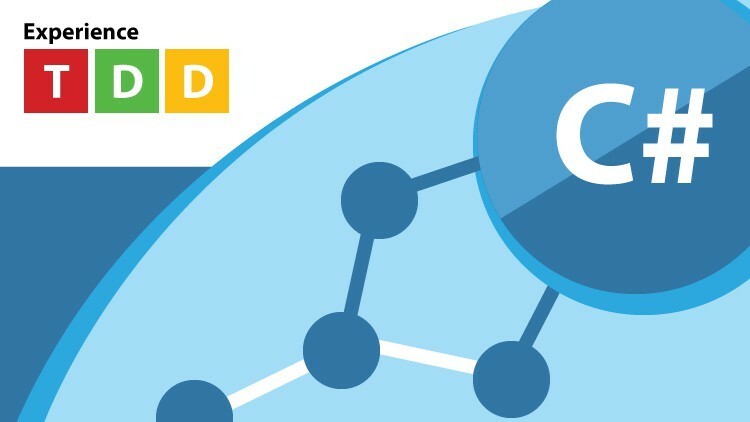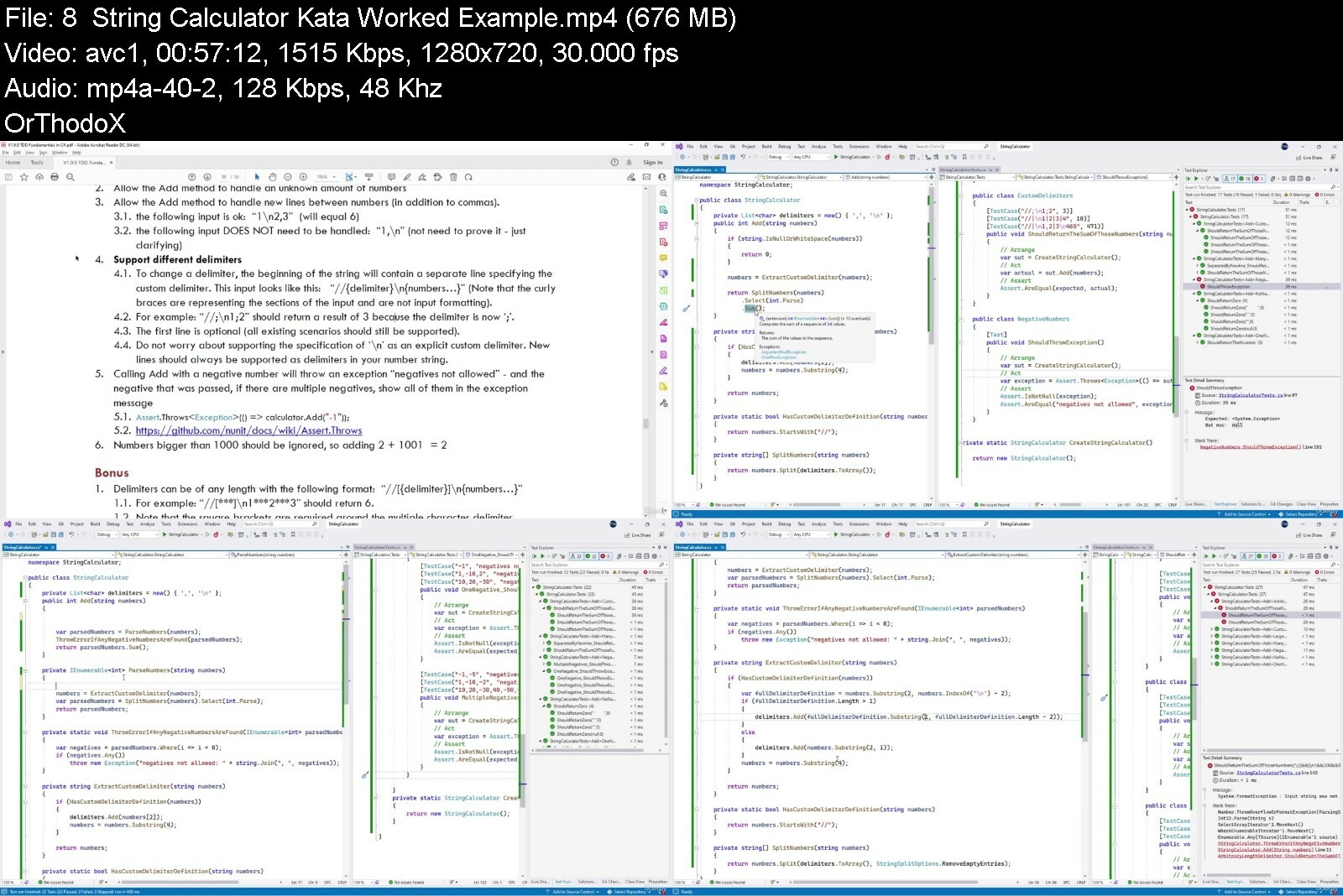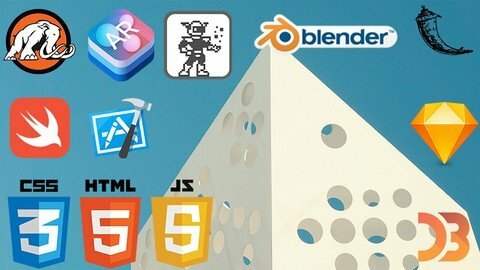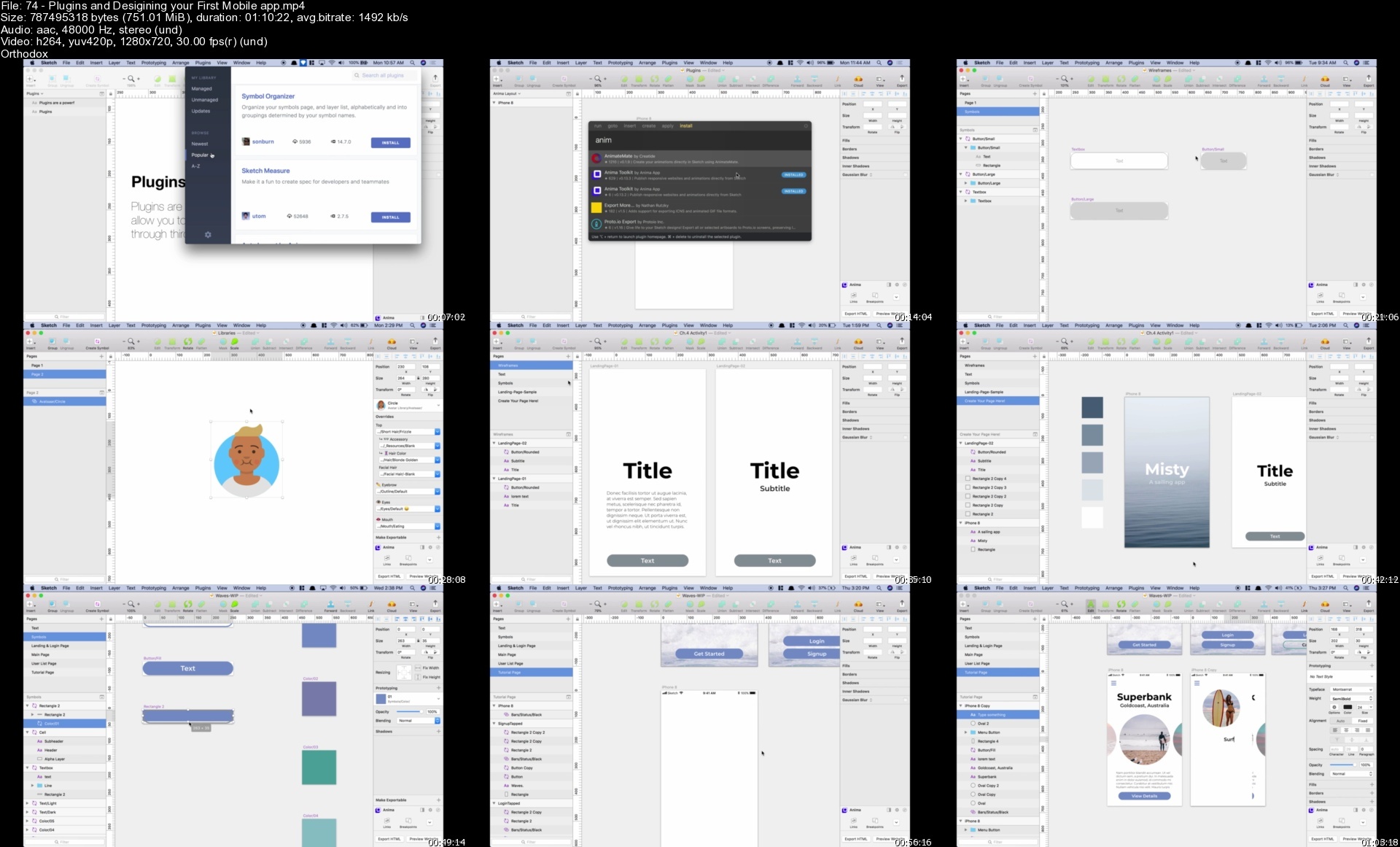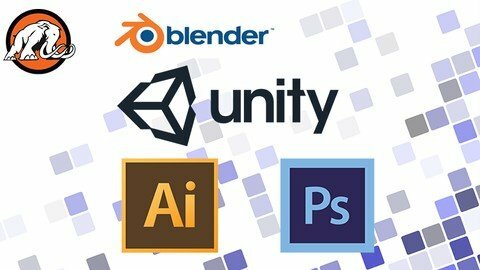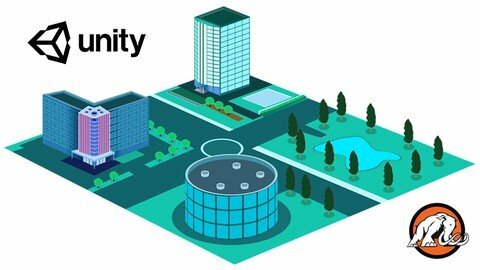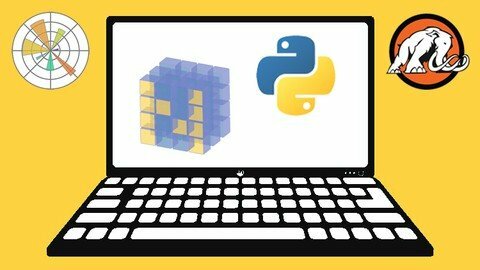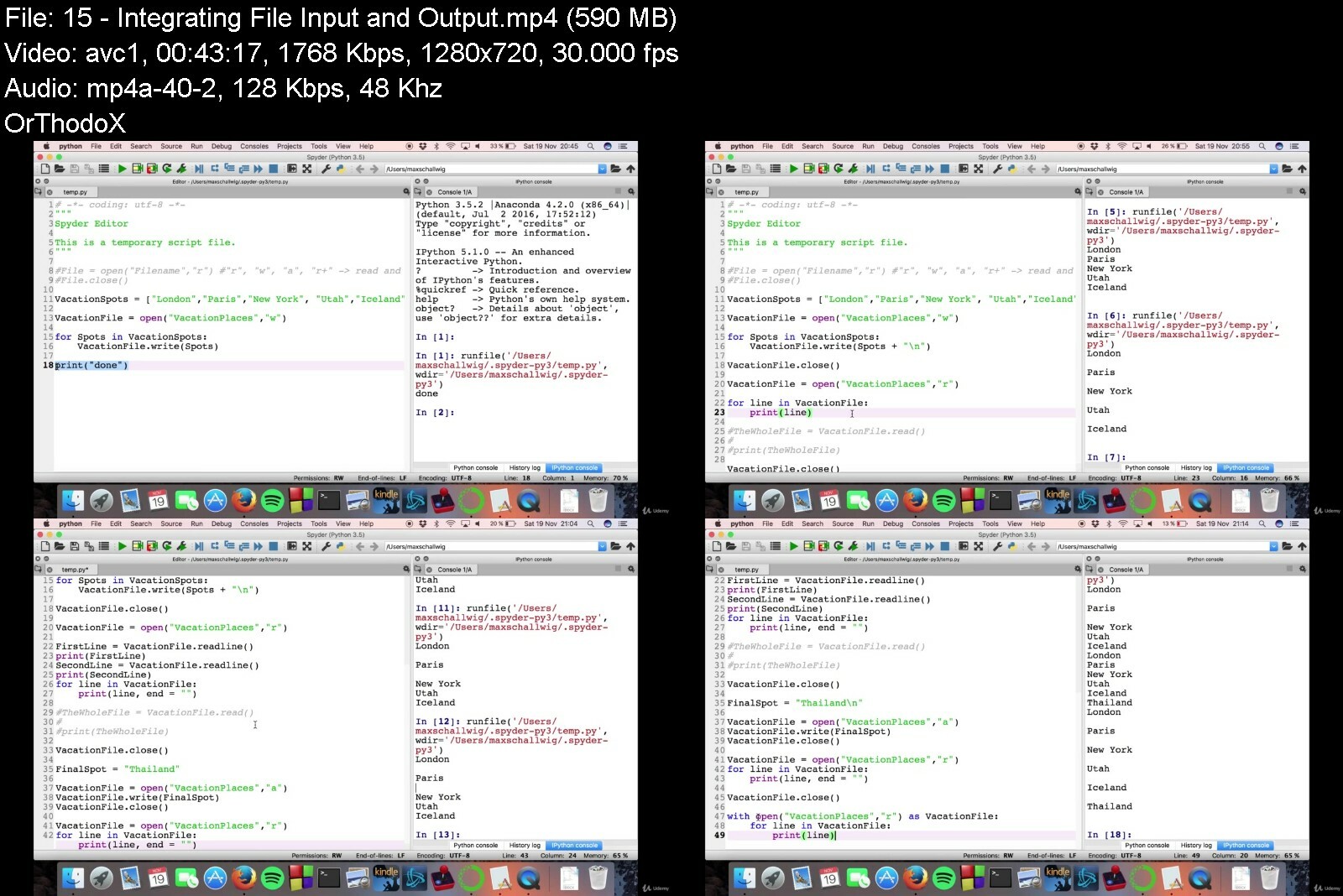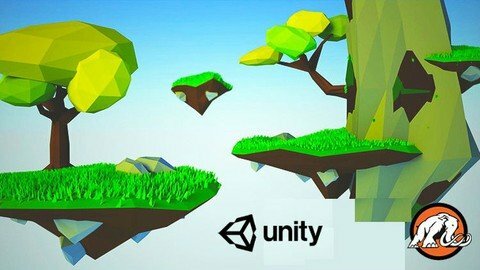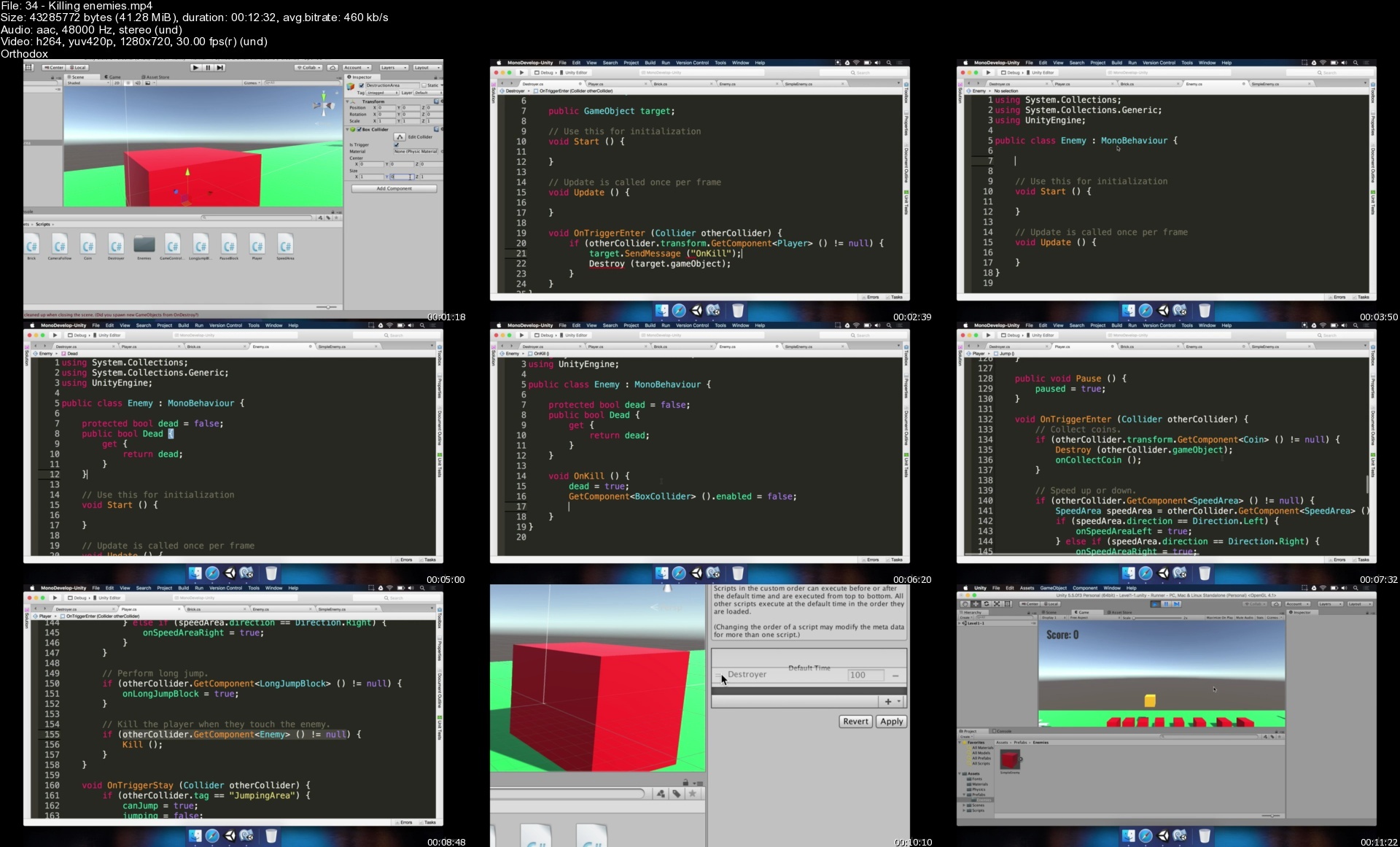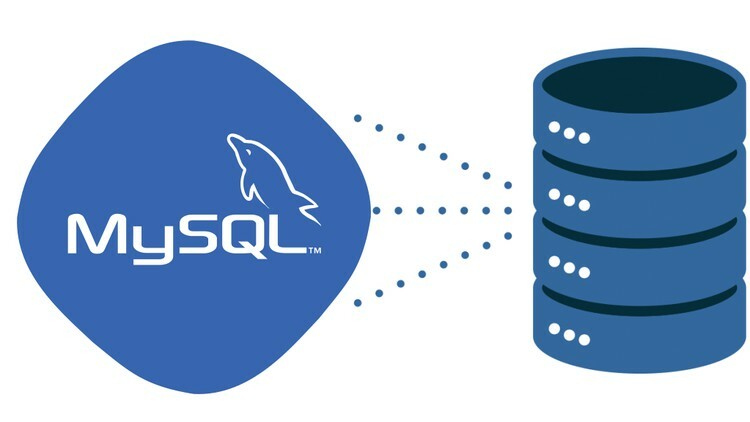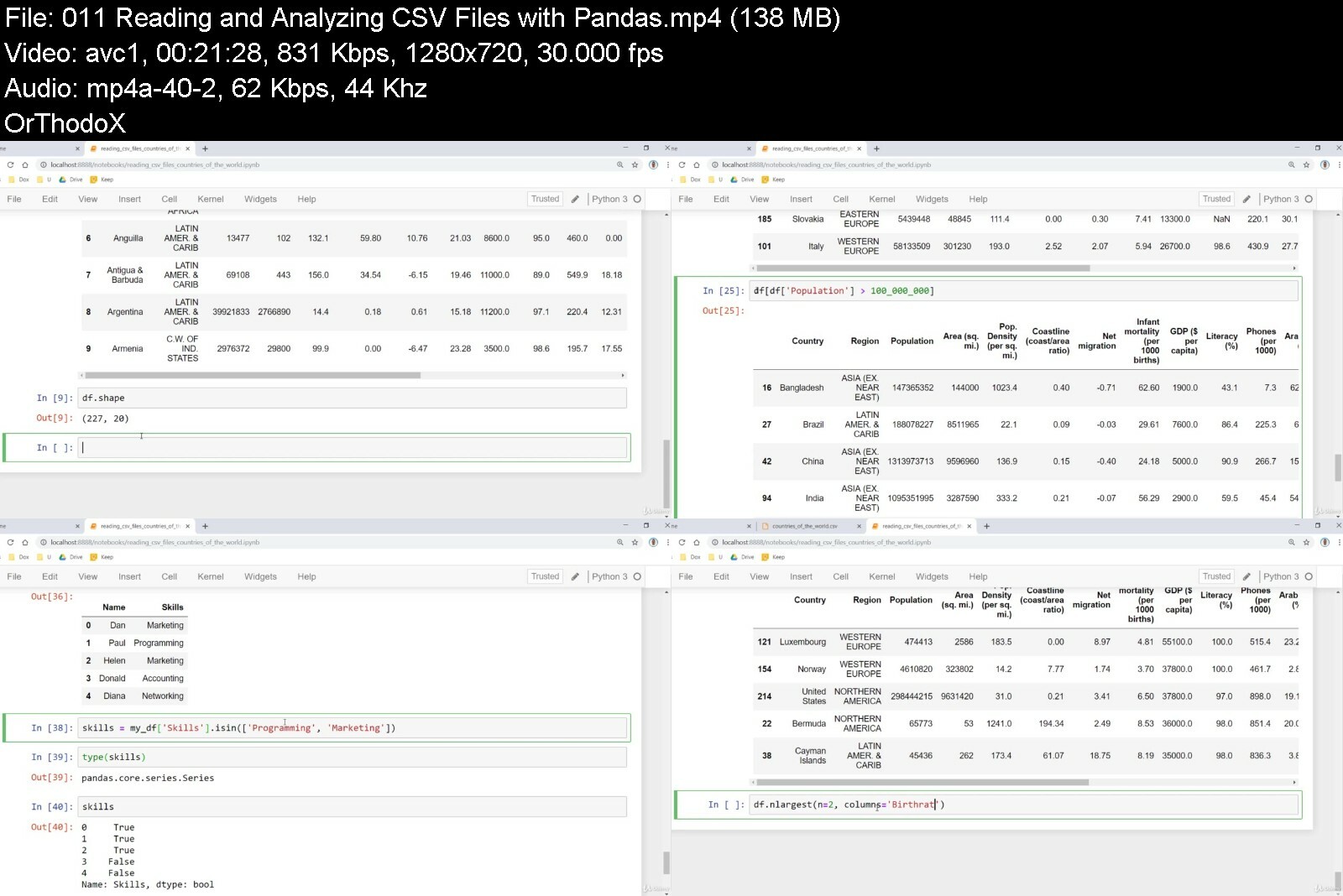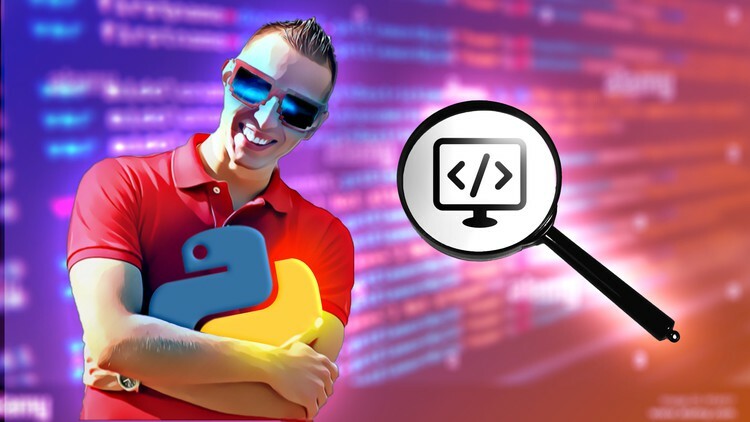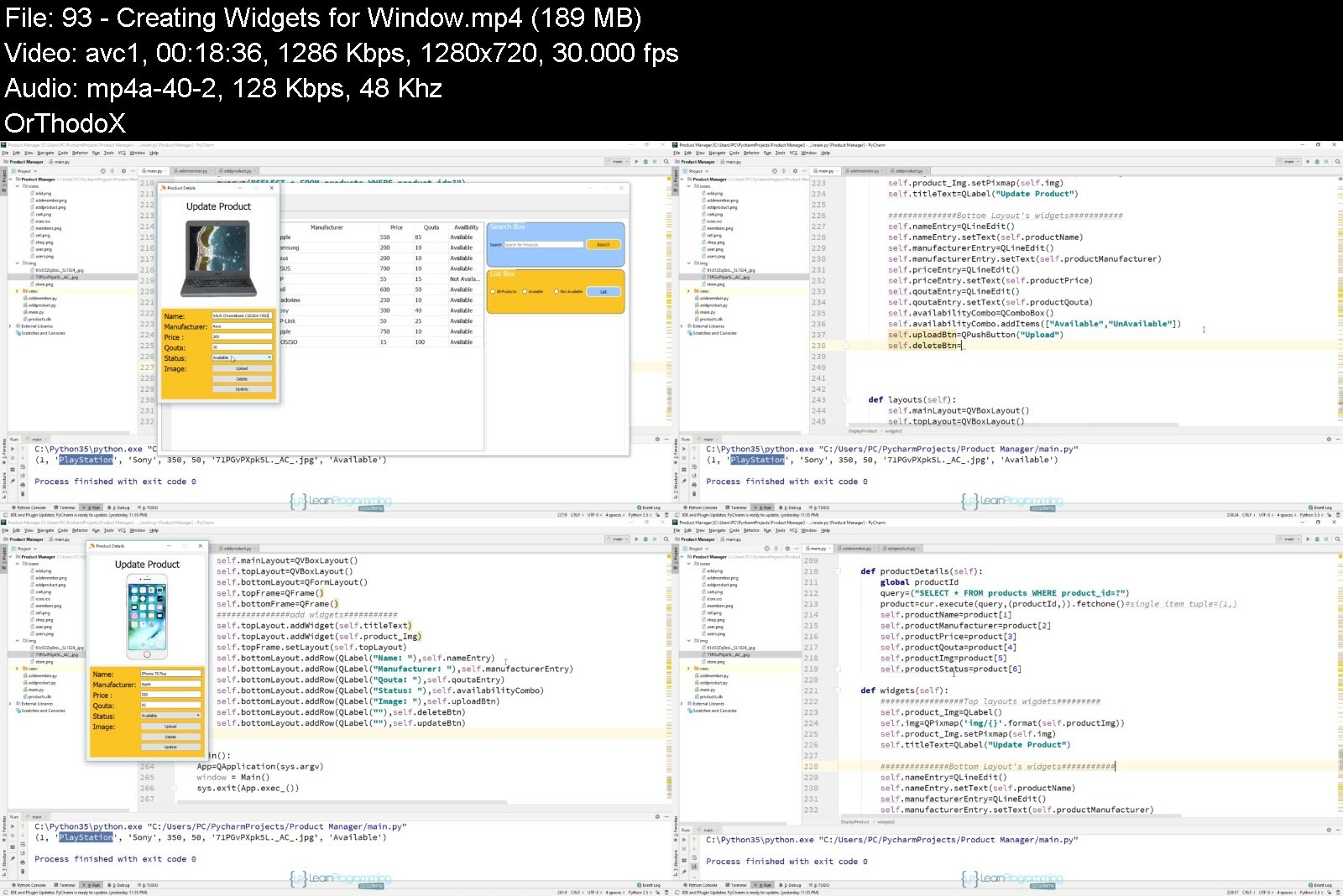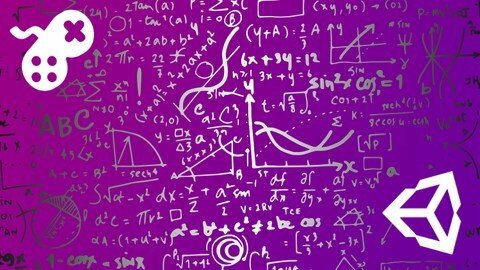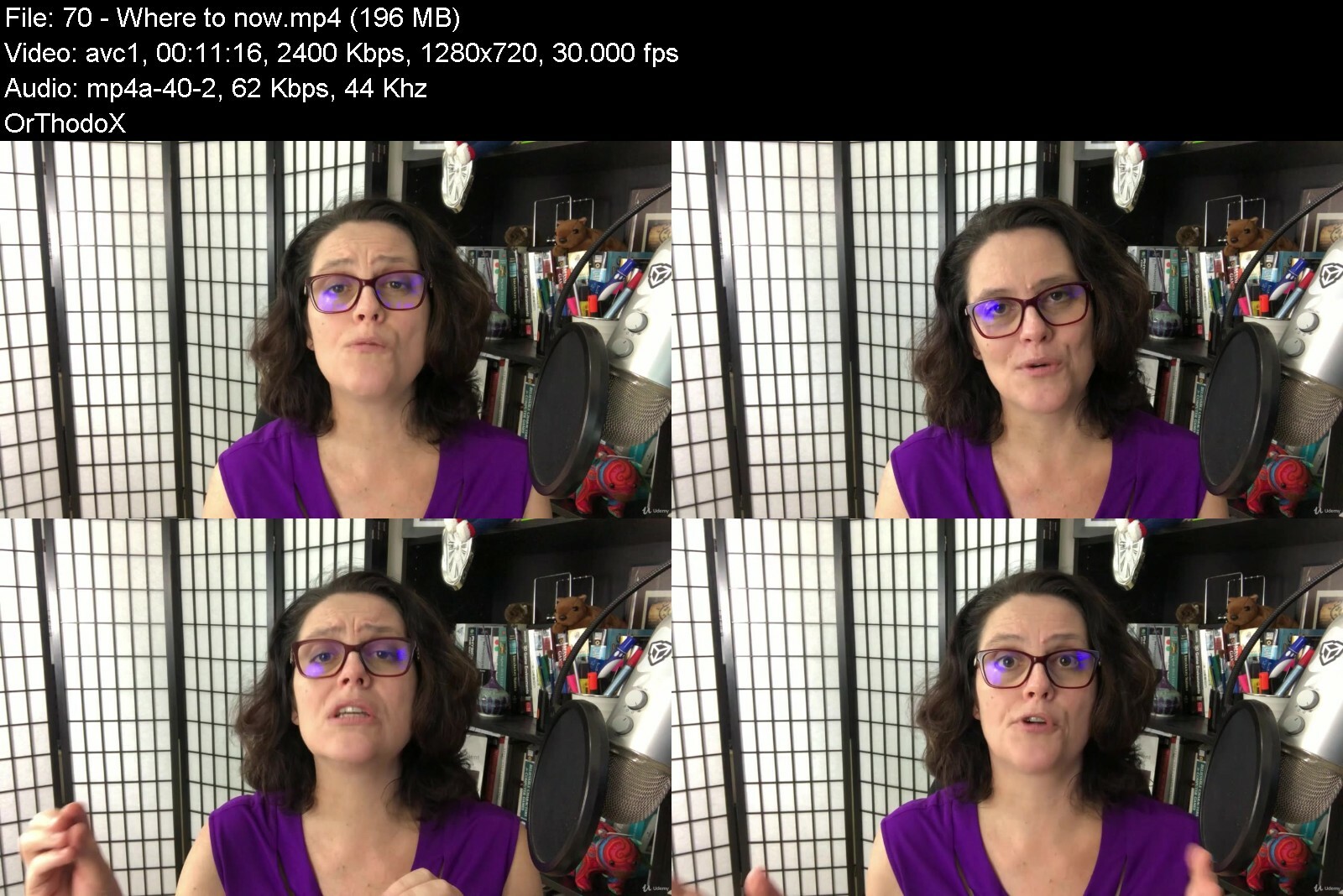Build 4 Unity® Games: Best 2D, 3D And Multiplayer Tutorials
Build 4 Unity® Games: Best 2D, 3D And Multiplayer Tutorials
Last updated 12/2018
MP4 | Video: h264, 1280x720 | Audio: AAC, 44.1 KHz
Language: English | Size: 54.13 GB | Duration: 69h 11m
A runaway success of a Kickstarter funded this course. Improve your C sharp and code architecture. Full game scale.
What you'll learn
Learn to code for game development in Unity C#
Create your own unique Battle Royale system.
Learn the fundamentals of game design.
Create game art in Blender.
Build game assets in Illustrator.
Make game pieces in Photoshop.
Navigate the Unity® editor.
Design large environments for your character to explore in.
Build 3D models for the game in Blender.
Integrate the art from Blender into Unity®.
Requirements
Unity® and Blender are free to download. Please download and install Unity® and Blender before purchasing this course
Adobe Photoshop
Illustrator or a free program like Gimp (to make 2D art)
This course was recorded on a Mac computer, but you can use Unity® and Blender on a PC.
Description
Build 4 huge games in Unity® and C#. Complete your first Unity games for web, Mac & PC. Learn all about game development more efficiently YouTube tutorials. You will learn:Game development & design. Learn how to use Unity® in C#Build a 2D game like Flappy Bird in UnityMake an Angry Birds game from scratchBuild an air hockey game with C#Learn what Photoshop is used for in game developmentThe game development process step by step for beginnersMake your own shooter game in UnityBuild a battle royale game like FortniteAdd multiplayer functionality to game programmingLearn the foundations of Blender 3DThe best coding program online. Beginner's guide for aspiring game developers. Learn C# and programming fundamentals. Create epic 2D and 3D games using Unity® and Blender! This course is unique because we make both the code and the art for the game from scratch. We teach you the fundamentals of designing, coding, and modeling a 3D game.First you design the game and its functionality in Unity®. You learn how to code in C# and build video game levels. Don't worry if you've never coded before. We start simple and add more to the game as the course goes on.Best Unity Course: Build Multiple Games in FullUnity® is one of the most popular platforms in game development. You can use Unity® to build 2D and 3D games. Unity® is cross-platform, which means it is easy to use with other platforms.Then you create the 3D models for the game in Blender. You build all the art assets for the game. You learn how to integrate your art from Blender into Unity®.Foundations of Blender and Adobe Illustrator TutorialsBlender, like Unity®, is a popular production suite that is free to download. Blender is a revolutionary tool for making 3D art digitally. With Blender, you can make art assets for games, like we do in this course.Watch the free lectures and amazing trailer, then jump right in and start participating with the Mammoth community.
Overview
Section 1: Intro to Unity
Lecture 1 Introduction
Lecture 2 Unity Editor
Lecture 3 Moving a Cube
Lecture 4 Materials
Lecture 5 Lights
Lecture 6 Particle System
Lecture 7 Applying Physics
Lecture 8 Asset Store
Section 2: Intro to Coding
Lecture 9 Introduction
Lecture 10 Variables
Lecture 11 Methods
Lecture 12 If Blocks
Lecture 13 Loops
Section 3: Intro to Inputs
Lecture 14 Introduction
Lecture 15 Key Presses
Lecture 16 Moving a Player
Lecture 17 Jumping
Lecture 18 Moving Forward
Lecture 19 Cycling Cameras
Section 4: Intro to Prefabs
Lecture 20 Introduction
Lecture 21 Introduction to Prefabs
Lecture 22 Random Angles
Lecture 23 Explosion Effects
Lecture 24 Adding explosion effects
Section 5: Intro to VR
Lecture 25 Introduction
Lecture 26 Activating VR
Lecture 27 Building a Castle
Lecture 28 Lowering the Door
Lecture 29 Triggering
Lecture 30 Interface
Lecture 31 UPDATE - Using the Unity Package with Unity 5.6
Section 6: Let's Make a Game - 2D Flappy Bird
Lecture 32 Introduction
Lecture 33 Project Setup
Lecture 34 Player Structure
Lecture 35 Player Movement
Lecture 36 Camera Follow
Lecture 37 Screen Limits
Lecture 38 Creating an Obstacle
Lecture 39 Instantiating Obstacles
Lecture 40 Obstacle Positioning
Lecture 41 Infinite Game
Lecture 42 Interface
Lecture 43 Score Areas
Lecture 44 Score Events
Lecture 45 Canvas Concerns
Lecture 46 Game Over
Lecture 47 Small Gameplay Adjustments
Section 7: Photoshop Intro
Lecture 48 Build a New File
Lecture 49 Navigational Controls
Lecture 50 Basic Tools Rundown
Lecture 51 Basic Tools Usages
Lecture 52 Basic Secondary Tools
Lecture 53 Basic Layers
Section 8: Creating Assets (Photoshop Project)
Lecture 54 Pixel Setup
Lecture 55 Pipe Asset
Lecture 56 Creating the Floor
Lecture 57 Background Clouds
Lecture 58 Background Buildings
Lecture 59 Creating Flappy
Lecture 60 Background Sky
Lecture 61 Exporting Art
Section 9: Finishing the Game (Unity Project)
Lecture 62 Integrating Fonts
Lecture 63 Background & SFX
Lecture 64 Adding Pipes
Lecture 65 Adding the Background
Lecture 66 Foreground Parallax
Lecture 67 Size Adjustments
Lecture 68 Remaining Layers
Lecture 69 Flapping animation
Lecture 70 Changing Skins
Lecture 71 Creating Buttons
Lecture 72 Adjusting Game flow
Lecture 73 Rotating the Player
Lecture 74 Challenge Time
Section 10: Source and Assets - Flappy Bird
Lecture 75 Source and Assets
Section 11: Introduction to Illustrator
Lecture 76 Introduction
Lecture 77 New File and Navigation
Lecture 78 General Directions
Lecture 79 Pen Tool
Lecture 80 Line Segments
Lecture 81 Shape Tools
Lecture 82 Colour Filling
Lecture 83 Paintbrushes
Lecture 84 Pencil Tools
Lecture 85 Rotation and Reflection
Lecture 86 Scale Tools
Lecture 87 Width Tool
Lecture 88 Shape Builder (Part 1)
Lecture 89 Shape Builder (Part 2)
Lecture 90 Shape Buidler (Part 3)
Lecture 91 Free Transform
Lecture 92 Perspective Tool
Lecture 93 Mesh Tool
Lecture 94 Gradient Tool
Lecture 95 Symbol Sprayer
Lecture 96 Graphing Tools
Lecture 97 Layers
Lecture 98 Illustrator Fun (Part 1)
Lecture 99 Illustrator fun (Part 2)
Lecture 100 Illustrator fun (Part 3)
Section 12: Creating the Art Assets - Angry Birds (Illustrator Projects)
Lecture 101 Drawing Angry Bird
Lecture 102 Painting the Bird
Lecture 103 Bird Shape Edit
Lecture 104 Making the Box
Lecture 105 Making the Logs
Lecture 106 Making the Slingshot
Lecture 107 Enemy Characters
Lecture 108 Exporting and Renaming Assets
Section 13: Creating the Game (Unity Project)
Lecture 109 Introduction
Lecture 110 Project Setup
Lecture 111 Activating Physics
Lecture 112 Preparing to Launch
Lecture 113 Launching Logic
Lecture 114 Dragging Feedback
Lecture 115 Smoothing the Launch
Lecture 116 Physics Materials
Lecture 117 Obstacles
Lecture 118 Prefabs
Lecture 119 Targets
Lecture 120 Dynamically Adding a Bird
Lecture 121 Events
Lecture 122 Interface
Lecture 123 Multiple Birds
Lecture 124 Win and Lose
Lecture 125 Scoring Logic
Lecture 126 Level Design
Lecture 127 Bird Airtime Adjustments
Lecture 128 Slingshot
Lecture 129 Sounds Effects
Lecture 130 Challenge
Section 14: Source Code and Art Assets - Angry Birds
Lecture 131 Source Code and Art Assets
Section 15: Introduction to Blender
Lecture 132 Download and Install Blender
Lecture 133 Setting Up Blender
Lecture 134 Camera Controls
Lecture 135 Emulated Numbpad Camera
Lecture 136 Basic Object Manipulation
Lecture 137 Frequently Used Tools
Lecture 138 Mirror Modifier
Section 16: Creating Assets - Air Hockey
Lecture 139 Air Hockey Paddle
Lecture 140 Air Hockey Puck
Lecture 141 Air Hockey Table
Lecture 142 Asset Exporting
Section 17: Unity Project - Air Hockey
Lecture 143 Introduction
Lecture 144 Project Setup
Lecture 145 Setting Up Physics
Lecture 146 Paddle Movement
Lecture 147 Game Bounds
Lecture 148 Bounciness
Lecture 149 Decelaration
Lecture 150 Collisions
Lecture 151 Scoring
Lecture 152 Player 2
Lecture 153 Interface
Lecture 154 Restarting the Game
Lecture 155 Sounds Effects
Lecture 156 Challenge Time
Section 18: Source Code and Art Assets - Air Hockey
Lecture 157 Source Code and Art Assets
Section 19: Unity
Lecture 158 Downloading and Installing Unity
Lecture 159 Starting Your Project
Lecture 160 Unity Interface - View the Game
Lecture 161 Unity Interface - Hierarchy and Game Objects
Lecture 162 Unity Interface - Project and Console
Section 20: Coding
Lecture 163 Intro to Coding
Lecture 164 The Basic Script
Lecture 165 Hello World
Lecture 166 Variables
Lecture 167 Access Modifiers
Lecture 168 Boolean Values
Lecture 169 Loops
Lecture 170 Checkpoint
Section 21: Input
Lecture 171 Input
Lecture 172 Player Parameters
Lecture 173 Player Movement
Lecture 174 Update vs. Fixed Update
Lecture 175 Player_s Input
Lecture 176 Third Person Character
Lecture 177 Camera Look
Lecture 178 Camera Move
Lecture 179 Checkpoint
Lecture 180 Cursor Lock Mode
Lecture 181 Mouse Look
Lecture 182 Animation Movement
Lecture 183 Strafing in the Animator
Lecture 184 Side Look
Lecture 185 Changing the Focal Point Side
Lecture 186 Focal Smoothness
Lecture 187 Vertical Look
Lecture 188 Rotation Point
Lecture 189 Camera Improvement
Lecture 190 Camera Improvements
Section 22: Battle Arena
Lecture 191 Level Design Basics
Lecture 192 Center Zone
Lecture 193 Sniping Tower
Lecture 194 Reward Vs. Punishment
Lecture 195 Simple House
Lecture 196 Opening Door
Lecture 197 Raycasts
Lecture 198 Interacting with Doors
Lecture 199 Villa
Lecture 200 Terrains
Lecture 201 Creating an Interesting Terrain
Lecture 202 Grass
Lecture 203 Terrain Bounds
Lecture 204 Checkpoint
Lecture 205 Canvas
Lecture 206 Anchors and Pivots
Lecture 207 Text
Lecture 208 Updating Resources Text
Lecture 209 Tool Selection Interface
Lecture 210 Tool Switching
Lecture 211 Tool Selector Improvements
Lecture 212 Resource Objects
Lecture 213 Collection Cooldown
Lecture 214 Smooth Collection Animations
Lecture 215 Checkpoint
Lecture 216 Adding Obstacle Tools to List
Lecture 217 Obstacle Prefabs
Lecture 218 Cycling Between Obstacles
Lecture 219 Preserving the Obstacle Rotation
Lecture 220 Placing Obstacles in the Screen
Lecture 221 Using Resources
Lecture 222 Obstacles Transparency
Lecture 223 Checkpoint
Section 23: Weapons
Lecture 224 Weapon Base Class
Lecture 225 Inheritance
Lecture 226 Abstract Classes
Lecture 227 Item Box
Lecture 228 Awarding Ammunition
Lecture 229 Weapon Inventory
Lecture 230 Weapon Interface
Lecture 231 Selecting Weapons
Lecture 232 Checkpoint
Lecture 233 Player-Weapon Communication
Lecture 234 Shooting Logic
Lecture 235 Reloading Logic
Lecture 236 Reload Bars
Lecture 237 Adding New Weapons
Lecture 238 Shooting Raycasts
Lecture 239 Correct Shooting Rays
Lecture 240 Weapon Accuracy
Lecture 241 Destroying Obstacles
Lecture 242 Shotgun
Lecture 243 Checkpoint
Lecture 244 Improving the Aim Variation
Lecture 245 Sniper
Lecture 246 Zoom Interface
Lecture 247 Rocket Launcher
Lecture 248 Make The Rocket Fly
Lecture 249 Explosion
Lecture 250 Damaging Things
Lecture 251 Checkpoint
Section 24: Targets
Lecture 252 Static Enemy
Lecture 253 Flying Enemies
Lecture 254 Searching for a Player
Lecture 255 Chasing Logic
Lecture 256 Hitting the Player
Lecture 257 Destroying the Player
Lecture 258 Game Over Screen
Lecture 259 Reloading the Scene
Lecture 260 Reloading with the Scene Controller
Lecture 261 Checkpoint
Section 25: Multiplayer
Lecture 262 Networking Intro
Lecture 263 Player Prefab
Lecture 264 Spawning Adjustments
Lecture 265 Start Positions
Lecture 266 Syncing Player Positions
Lecture 267 Fixing Network Conflicts
Lecture 268 Syncing Animations
Lecture 269 Networked Obstacles
Lecture 270 Spawning Items
Lecture 271 Collecting Boxes
Lecture 272 Network Player Hit
Lecture 273 Network Player Destroy
Lecture 274 Obstacle and Resource Health
Lecture 275 Network Collecting Resources
Lecture 276 Syncing Rockets
Lecture 277 Checkpoint
Lecture 278 Syncing Explosions
Lecture 279 Checkpoint
Section 26: Melee Weapons
Lecture 280 Pickaxe
Lecture 281 WoodCutter Axe
Lecture 282 Fireman's Axe
Lecture 283 Throwing Axe
Section 27: Deagle
Lecture 284 Placing Image Reference
Lecture 285 Deagle Basic Block (Keystroke)
Lecture 286 Deagle Trigger Guard (Keystrokes)
Lecture 287 Deagle Main Body Tweaks
Lecture 288 Deagle Back Grip
Lecture 289 Deagle Hammer
Lecture 290 Deagle Sights
Lecture 291 Deagle Profile
Lecture 292 Deagle Gun Barrel
Lecture 293 Deagle Hand Hold
Lecture 294 Deagle Trigger
Lecture 295 Deagle Materials
Section 28: Revolver
Lecture 296 Revolver Start
Lecture 297 Revolver Trigger Guard
Lecture 298 Revolver Sights
Lecture 299 Guard to Handle Fix
Lecture 300 Revolver Handle Basic
Lecture 301 Revolver Handle Fix
Lecture 302 Revolving Body Thinning
Lecture 303 Revolver Main Body Fixes
Lecture 304 Bullet Wheel
Lecture 305 Gun Mid Profile
Lecture 306 Revolver Front Sights
Lecture 307 Revolver Trigger Hammer
Lecture 308 Revolver Trigger
Lecture 309 Revolver Materials
Section 29: M40 Sniper
Lecture 310 M40 Reference
Lecture 311 Sniper Trigger
Lecture 312 Sniper Main Body
Lecture 313 Sniper Barrel
Lecture 314 Sniper Scope
Lecture 315 Sniper Scope Details
Lecture 316 Sniper Materials and Fix
Section 30: Rocket Launcher
Lecture 317 RPG Basic Block
Lecture 318 Rocket Sights
Lecture 319 Rocket Handles
Lecture 320 RPG Trigger
Lecture 321 RPG Materials
Lecture 322 Rocket Pieces
Section 31: AR Scar
Lecture 323 Scar Body
Lecture 324 Scar Railings
Lecture 325 Scar Barrel
Lecture 326 Scar Front Sights
Lecture 327 Scar Back Sights
Lecture 328 Scar Back Stock
Lecture 329 Scar Materials
Section 32: HK MP5
Lecture 330 MP5 Start
Lecture 331 Weapon Reorganization
Lecture 332 MP5 Main body
Lecture 333 MP5 Front Sights
Lecture 334 MP5 Front Sight (Part 2)
Lecture 335 MP5 Top Rails
Lecture 336 MP5 Back Sights
Lecture 337 MP5 Back Stock
Lecture 338 MP5 Materials and Finishing
Section 33: UMP
Lecture 339 MP5 to UMP
Lecture 340 Weapon Reshaping
Lecture 341 UMP Top Railing
Lecture 342 UMP Mid Body
Section 34: Battle Royale Basic Character
Lecture 343 Character Setup
Lecture 344 Character Head
Lecture 345 Character Body Base
Lecture 346 Character Legs
Lecture 347 Character Arms
Lecture 348 Flow Cleanups
Lecture 349 Characters Bones
Lecture 350 Setup For Textures
Lecture 351 Character UVing
Lecture 352 Texturing Setup
Lecture 353 Texture Painting
Section 35: Art and Sounds
Lecture 354 Art Intro
Lecture 355 Showing The New Level
Lecture 356 Checkpoint
Lecture 357 Changing Prefab Art
Lecture 358 Obstacle Art
Lecture 359 Particle Effects
Lecture 360 Rocket Sounds
Lecture 361 Interface Sounds
Lecture 362 2D vs 3D Sounds
Lecture 363 Weapons Sounds
Lecture 364 Shooting through the Network
Lecture 365 Network Authority for Audio
Lecture 366 Footstep Setup
Lecture 367 Networking Footstep Sounds
Lecture 368 Hit Sounds
Lecture 369 Checkpoint
Lecture 370 Integrating new Characters
Lecture 371 Animation Mask
Lecture 372 Animation Layering
Lecture 373 Integrating Top animations
Lecture 374 Checkpoint
Lecture 375 Adding Weapon Models
Lecture 376 Showing Models
Lecture 377 Syncing Animation Triggers
Lecture 378 Syncing Weapon Equip
Lecture 379 Initial Weapon Equip
Lecture 380 Checkpoint
Section 36: Improvements
Lecture 381 Energy State
Lecture 382 Script Control Of The Energy Ball
Lecture 383 Energy Spawning Logic
Lecture 384 Adjusting The Movement Speed
Lecture 385 Syncing The Energy Mode
Lecture 386 Server Screen
Lecture 387 Server Screen Integration
Lecture 388 Client Screen
Lecture 389 Allowing Client To Move
Lecture 390 Storm Manager
Lecture 391 Storm Visuals
Lecture 392 Storm Shrinking Logic
Lecture 393 Storm Damage
Lecture 394 Storm Details
Lecture 395 Checkpoint
Lecture 396 Storm Alert
Lecture 397 Minor Adjustments
Lecture 398 Spreading Weapons
Lecture 399 Checkpoint
Lecture 400 Player Adjustments
Lecture 401 Outside Terrain
Lecture 402 Post Processing
Lecture 403 Outside Lightning
Lecture 404 Custom Fonts
Lecture 405 Lock Tool Switching While Spawning
Lecture 406 Update Bounds
Lecture 407 Network Bullets
Lecture 408 Weapon Difficulty Adjustments
Lecture 409 Checkpoint
Section 37: Flat Map
Lecture 410 New Train Setup
Lecture 411 Adding Mountains
Lecture 412 Adding Resources
Lecture 413 Checking the New Map
Lecture 414 Checkpoint
Lecture 415 Spreading Weapons
Lecture 416 Checkpoint
Lecture 417 Course Wrap Up
Section 38: Assets
Lecture 418 Assets
Lecture 419 Please rate this course
Lecture 420 Bonus Lecture - Mammoth Interactive Deals
Anyone who wants their start at making 3D or 2D video games.,People that want to create their own Battle Royale.,Anyone who wants to learn game development.,Beginners who want to learn how to use Blender.,Even if you have never coded before, you can use these lessons to get a headstart in the game-making realm! This course is targeted towards beginners to immediate.
Homepage
